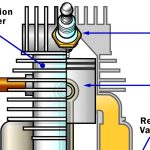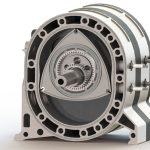The exhaust system collects the exhaust gases from the cylinders, removes harmful substances, reduces the level of noise, and discharges the purified exhaust gases at a suitable point of the vehicle away from its occupants.
The function of the Exhaust system
The exhaust system collects the exhaust gases from the cylinders, removes harmful substances, reduces the level of noise, and discharges the purified exhaust gases at a suitable point of the vehicle away from its occupants. The exhaust system can consist of one or two channels depending on the engine. The flow resistance must be selected so that the exhaust backpressure affects engine performance as little as possible. To ensure that the exhaust system functions perfectly, it must be viewed as a whole and developed accordingly. This means that its components must be coordinated by the design engineers in line with the specific vehicle and engine.
Silencer
Every internal combustion engine produces “exhaust noise” due to the pulsating emission of gases from the cylinders. This noise has to be silenced by reducing the sound energy of the exhaust gas flow. There are two basic options here: Absorption and reflection of the sound in the silencer. These two principles are generally combined in a single silencer. Exhaust chambers and exhaust flaps are other sound-absorbing and sound-modifying elements that can be used to eliminate especially undesirable frequencies from the outlet noise. Catalytic converters also have a sound-absorbing effect.
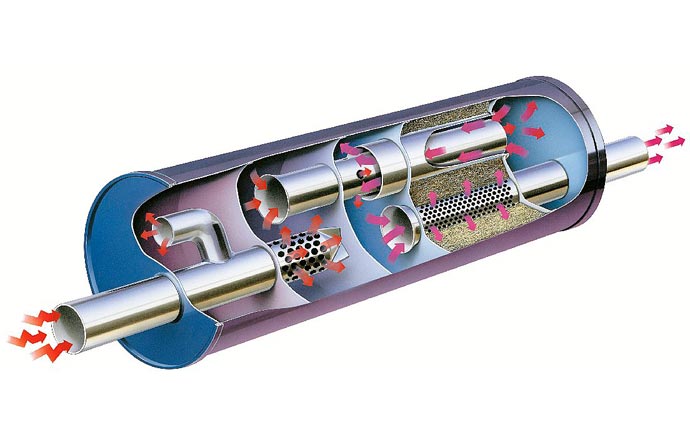
The exhaust system is itself a system subject to vibration, it produces noise itself through natural frequencies and vibration which are transmitted to the car body. Careful coordination of the entire system is, therefore, necessary here. This includes the design and positioning of the individual elements of the exhaust system and their flexible mountings.
STRUCTURE OF AN EXHAUST SYSTEM
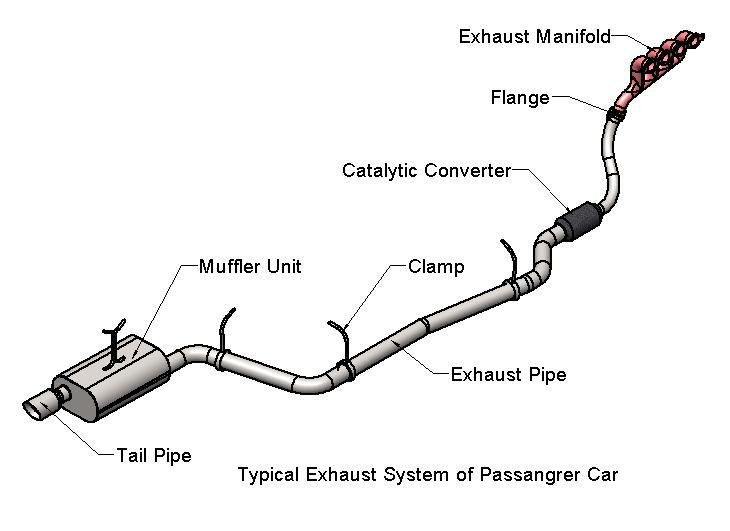
Today’s exhaust systems have very little in common with the simple exhausts used in the past. More modern cars, basically consist of a front section with
- the exhaust manifold,
- the purification system and
- the connecting pipes, together with a rear section with the silencer system and pipes.
The entire system is connected to the floor pan by means of flexible mounting elements. The number of catalytic converters and silencers depends on the type of engine, engine performance, and the required emission values.
MASS DAMPERS AND DECOUPLING ELEMENTS
In Vee engines, each of the two-cylinder banks has its own exhaust channel. The exhaust channels either remain separate up to the tailpipes or are brought together beforehand – for example, in a common end silencer.
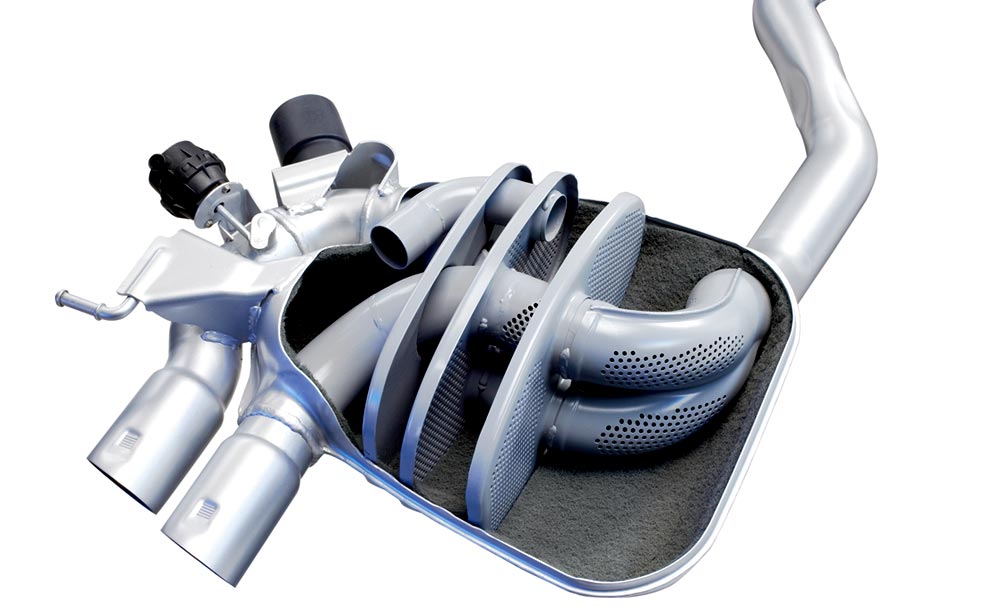
If the exhaust system consisted only of rigid pipes, the rear silencer would vibrate violently – with the risk of subsequent breakage. For this reason, modern exhaust systems are built with mass dampers and decoupling elements. They prevent major deflections of the exhaust system and also prevent smaller vibrations from being passed from the engine to the exhaust system and entering the interior as acoustic pulses. Mass dampers and decoupling elements thus improve ride comfort while increasing the service life of the exhaust system.
For More Press Here







